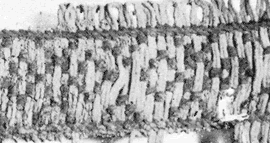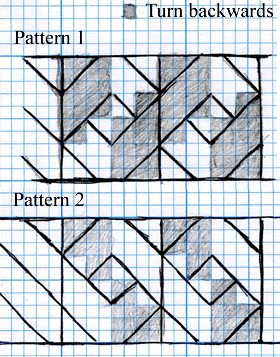
This document is provided as is without any express or implied warranties. While every effort has been taken to ensure the accuracy of the information contained, the author assumes no responsibility for errors or omissions, or for damages resulting from the use of the information contained herein.
Permission is granted to make and distribute verbatim copies of this document for non-commercial private research purposes provided the copyright notice and this permission notice are preserved on all copies. Website mirroring is permitted by express prior arrangement. Permission will only be granted if the document is posted in its entirety and the content and format of the document remain completely unaltered by the mirroring site. The definitive version of this document can be found at http://www.shelaghlewins.com.
Copyright © 2008 Shelagh Lewins.
The trading town of Birka was established on the Swedish island Björkö some twelve hundred years ago. A large number of wealthy graves have been excavated on the site providing exceptional evidence of Viking age textiles and other artifacts. Large numbers of tablet-woven bands have been found, many of them brocaded in silver.
The band from Birka grave 824 was woven in silk with silver brocade. It was about 7 - 9 mm wide. I can't find evidence of the colour of the silk but red seems to have been a very popular choice for brocaded bands and would be a good choice for a reconstruction. It looks great and contrasts well with the silver. I suspect that the choice of red garnets for cloisonne jewellery was for similar reasons.
Figure 1: Band 2 from Birka grave 824. Click for a larger picture.
I have adapted the motif to be woven in two colours, with the pattern made by warp-twining instead of brocade. This is a relatively simple pattern to weave and if you use white thread in place of the silver brocade, the appearance is broadly similar.
These instructions will not produce a museum-grade replica, but you will make a band with a period motif and that uses appropriate historical techniques. All pattern tablets are threaded identically and the design is created by turning tablets in different directions. It is a much more appropriate band for a Viking Age re-enactor than the modern "four forward, four back" patterns, or "ram's horn" and "kivrim" which are middle eastern and do not appear to date to the Viking Age.
Figure 2: My adapted version of the Birka band, woven in silk. Click for a larger picture.
This adapted design uses 20 tablets and two colours of thread, red and white. I used yellow for the border in Figure 2 but the original was in two colours only.
The 10 pattern tablets should each be threaded with one red thread and three white. Continuous warping is (as usual!) recommended.
Arrange the tablets according to Figure 2, so that the red thread travels around the pack in a spiral. Note that if you start weaving and find the pattern appearing on the underside of the band, your spiral is going the wrong way round. You can either correct it by turning alternate tablets a half turn, or turn the band over and carry on. This setup will weave a pattern of diagonal lines.

Figure 3: Threading and arrangement of pattern tablets.
5 border tablets are used on each side. Each tablet is threaded with four threads of the same colour. Arrange them to be alternately S and Z threaded.
Begin by turning all tablets forwards to weave a section of diagonal lines. After perhaps an inch you should have the diagonal lines clear and have established the width of the band. Judge from Figure 4 when to begin weaving the motif Pattern 1. Each of the four steps of the pattern should be woven twice, to give 8 picks in total for one pattern repeat. Always turn the border tablets forwards.

Figure 4: Turning instructions.
This corresponds to Pattern 1 on Figure 4. The white squares indicate turning a tablet forwards, the shaded indicate backwards, and the diagonal lines indicate the red pattern thread.
The border tablets will gradually tighten up, . When the threads of the border tablets become significantly twisted, flip them so that S becomes Z and vice versa. As you continue to weave, the border tablets will gradually untwist.
The centre pattern tablets will also become twisted, but more slowly than the borders. When you find the difference in tension begins to be a nuisance, finish a pattern repeat and then switch to Pattern 2. This twines in the other direction and will untwist your pattern tablets.
Geijer, Agnes. Die Textilfunde aus den Gräbern.. Birka: Untersuchungen und Studien III. Uppsala: Kungl. Vitterhets Historie och Antikvitets Akadamien, 1938.